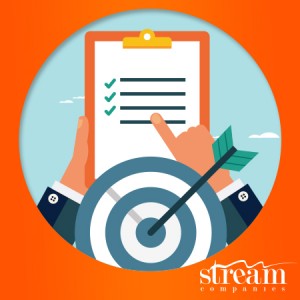It’s no secret that the popularity of marketing automation has been growing. Once thought the exclusive domain of larger than life firms, the marketing strategy and software has become increasingly accessible to smaller firms. But what exactly is Marketing Automation?
Marketing Automation in a Nutshell
In short, it allows marketers to build a user profile based on obtained or explicit information, often gathered through contact forms, and implicit information, often gathered through such things as clicks on links in an email.
The benefits of this method are twofold: It allows marketers to go beyond what they would be able to do with manual processes, and it has been shown to spike revenues and boost ROI.
Best Practices
Now that we’ve outlined what Marketing Automation is and how marketers can benefit from it, let’s discuss some steps you should take when you decide to dip your feet into the Marketing Automation pond:
- Impact. It’s good to understand the impact that implementing marketing automation will have on your current business model. How will it affect the work flow?
- Recognize. It’s important to recognize that marketing automation doesn’t replace marketing or lead generation. What it does do is fine tune it and improve your rate of success by creating optimized and relevant content that speaks to the needs and concerns of the consumer.
- Evaluate. Ensure you have the means and capabilities to properly enact marketing automation. You’ll need new ways to track and manage accounts in your sales funnel. Prepare your team to manage and analyze the information to move forward with your campaigns.
- Focus. Focus on building your campaign around a real/actual person. When you create a complete picture of a person you can market to their unique interests and challenges, which will be much more appealing to them than email opens and click through.
- Benchmarks. Create benchmarks and achievable goals, targets and time frames so you can properly plan and measure your campaigns.
- Pick One. Marketing automation offers a wide variety of business applications, but trying to put them all in place at once can hinder success. Postpone implementation of some applications until later in the campaign and focus your time and energy on improving the efficiency and effectives of a few key features.
- Open API. It’s a wise decision to invest in an open API so you have the ability to share data across channels and departments without any issues.
- Implementation. Create a profile of the buyer’s journey from your existing customers. Pay close attention to existing customers and old leads. You already spent the time and resources generating them, and an old lead can easily become a new lead. Be sure to capture a lead’s digital footprint so you may segment and nurture prospects based on behavior.
- Initiation. Build your proper email template. Make sure to align content with customer wants and needs. Define and segment your leads to target the right prospects based on the relevancy. Avoid auto pilot mode.
- Check ups. Make sure your data is up to date. Outdated data holds no value. As time goes by, develop a best practices guidebook for your marketing automation system. How much data you add should be no holds barred – if it’s relevant, add it.
- Test. Don’t get complacent. Analyze what worked, what didn’t work, why those did/didn’t work and what changes can be made to improve your next campaign.
I hope these quick and easy tips will help you better identify best practices for implementing and succeeding with Marketing Automation.
Are there some tips that you felt should be in here that weren’t listed? Please share them in the comments below.
About the Author
Benjamin Taylor is a digital fancy pants who is just a little bit obsessed with tech and social platforms. Don’t be distracted by Benjamin Taylor’s rugged good looks. Beneath lies a sharp marketing mind and a heart that beats digital 24/7.
(792)
Report Post




